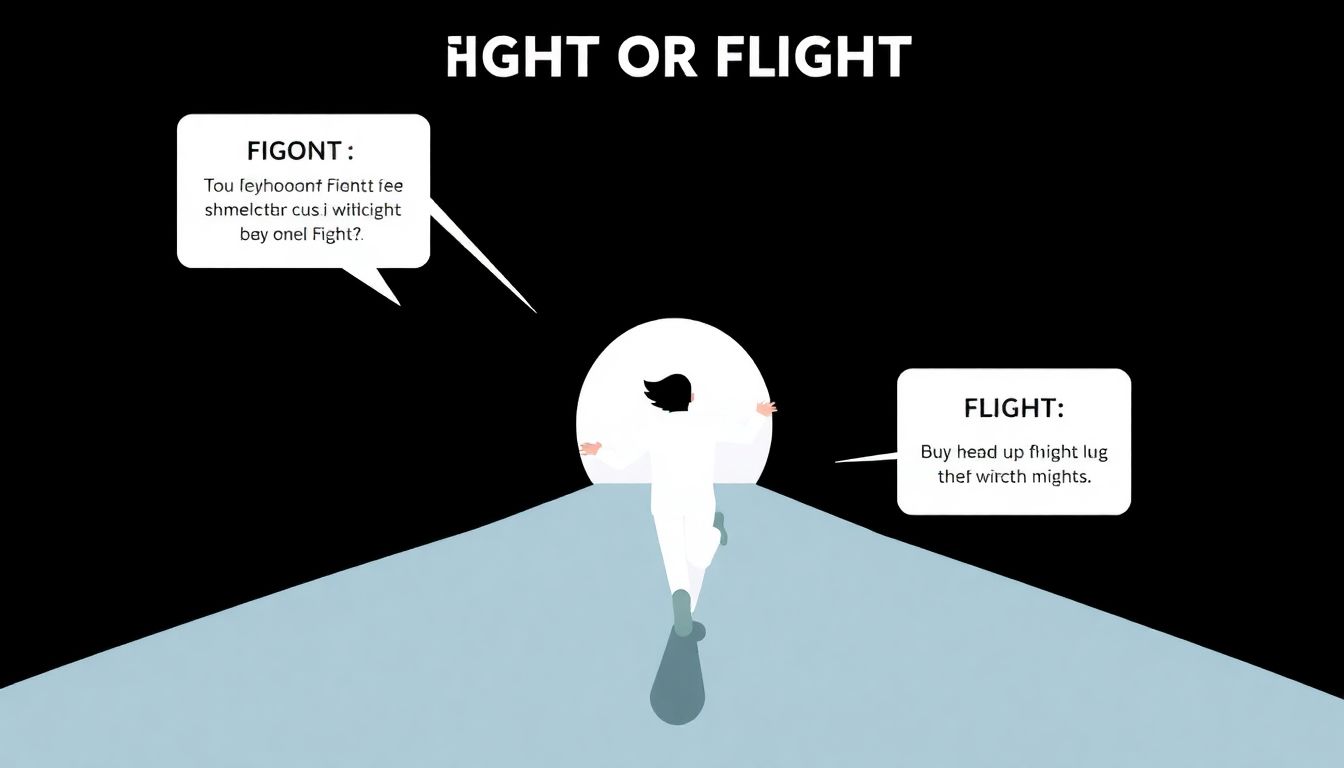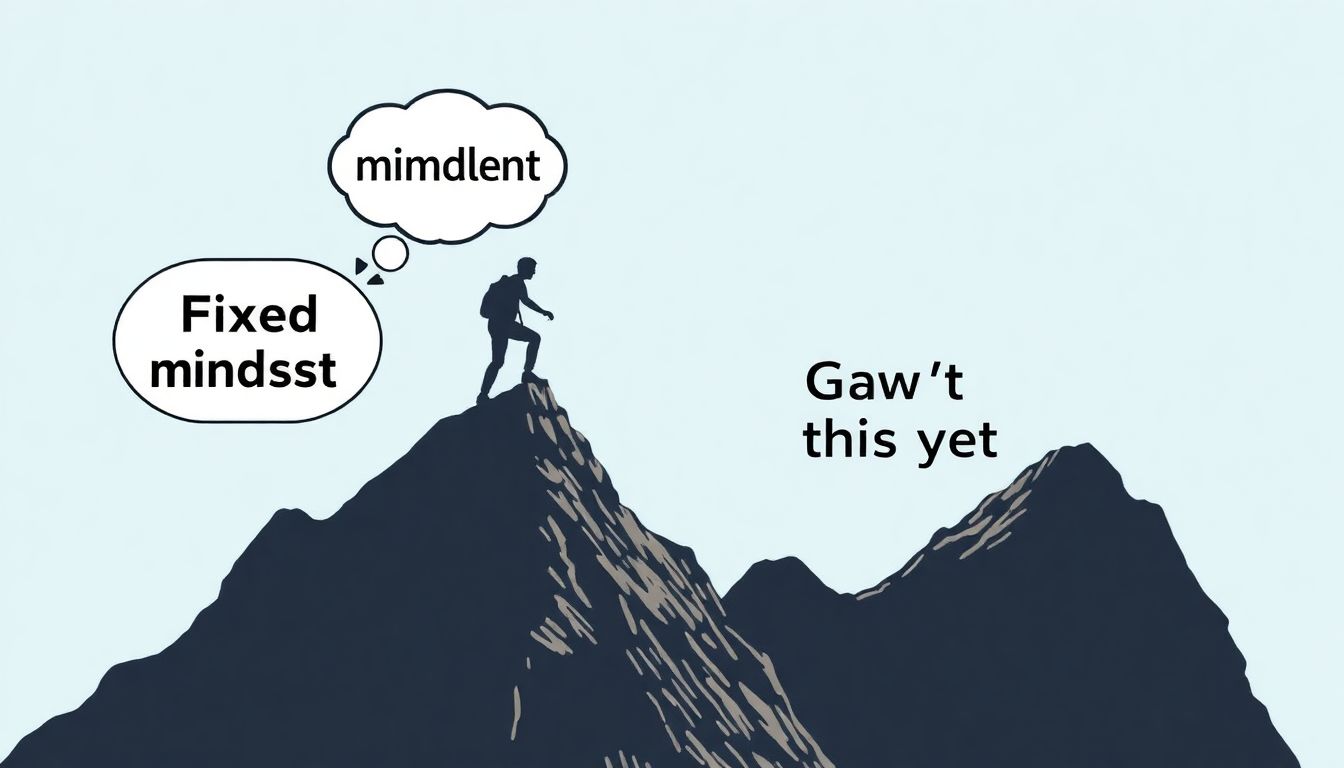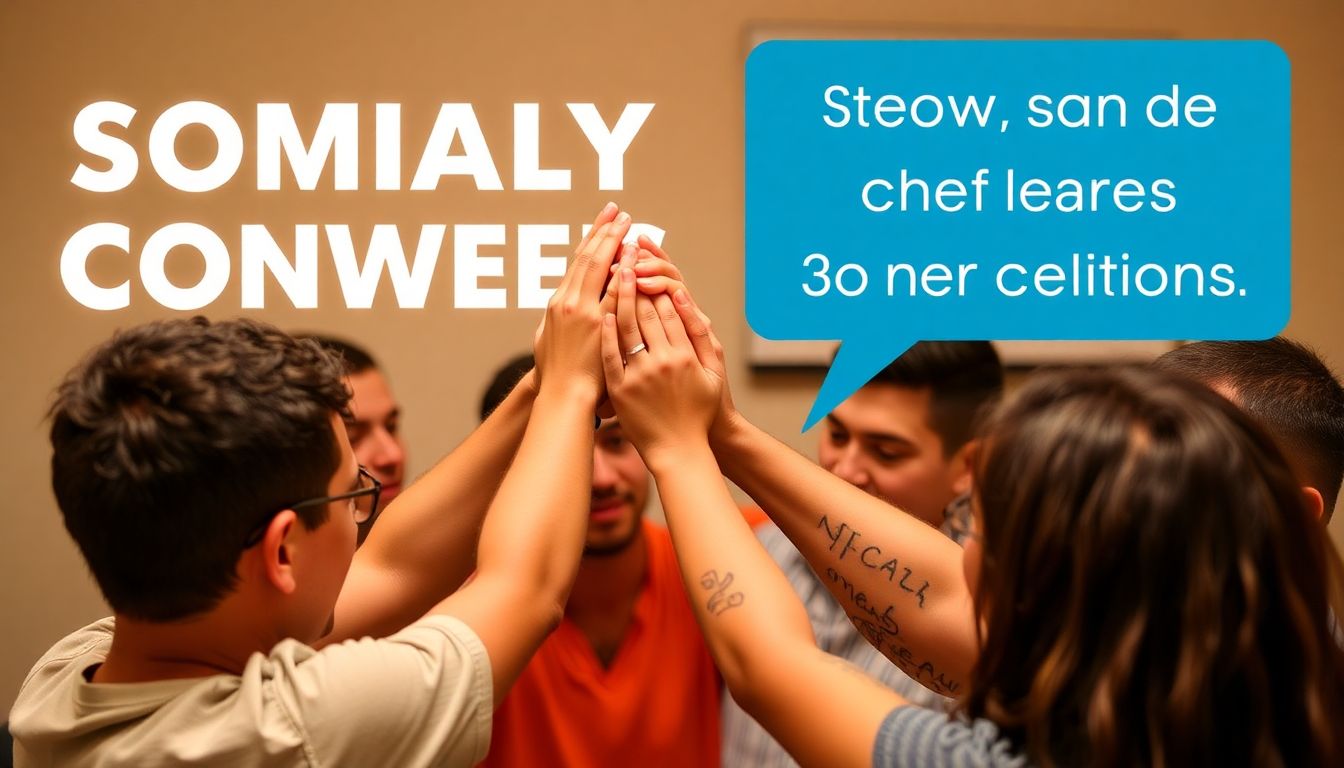Have you ever wondered what sets apart those who thrive in crisis situations from those who crumble under pressure? The answer lies in a concept known as ‘survival mindset’
- a mental framework that fosters mental resilience and equips individuals to navigate challenging times with courage, clarity, and composure. But what exactly is a survival mindset, and how can you cultivate it? This article, ‘Survival Mindset: Developing Mental Resilience for Crisis Situations’, aims to delve into the fascinating realm of crisis psychology and provide you with practical insights to bolster your mental fortitude.
According to a study by the American Psychological Association, 72% of adults report feeling stressed about money, while 66% worry about the future of our nation. These statistics underscore the prevalence of crisis-related stress in our daily lives. But here’s an intriguing fact: only 37% of those surveyed felt they were doing an excellent job managing their stress. This discrepancy highlights a pressing need for understanding and developing a survival mindset.
In this article, we promise to explore the science behind mental resilience, debunk common myths about stress and crisis, and provide actionable steps to help you cultivate your own survival mindset. By the end of this piece, you will have a clearer understanding of your mental capabilities, a toolkit of coping strategies, and the confidence to face whatever challenges come your way. So, are you ready to embark on this journey towards mental toughness? Let’s dive in!
Harnessing the Power Within: Cultivating Mental Resilience for Crisis Survival
In the grand theater of life, crises are the unexpected intermissions that test our mettle and challenge our resolve. They are the sudden blackouts that plunge us into darkness, forcing us to navigate without the familiar glow of routine. But what if we could harness the power within, transforming these intermissions into opportunities for growth and resilience? Mental resilience, much like a well-cultivated garden, is not an innate trait bestowed upon a fortunate few. It is a skill, a muscle that can be strengthened through deliberate practice and nurturing care. Imagine, if you will, a lighthouse keeper, standing steadfast against the relentless battering of stormy seas. This is not a feat of brute strength, but a testament to mental fortitude, honed over years of preparation and anticipation. Similarly, cultivating mental resilience is not about becoming immune to crises, but about developing the inner strength to weather them. It’s about cultivating a mindset that sees challenges not as insurmountable obstacles, but as opportunities for growth. It’s about nurturing a sense of self-belief that whispers, ‘I’ve navigated storms before, and I can do it again.’ It’s about cultivating a toolkit of coping strategies, from mindfulness and meditation to exercise and creative outlets, that help us stay afloat when the waves of life threaten to overwhelm. So, the next time a crisis looms, remember, you are not a passive victim of circumstance. You are the lighthouse keeper, standing tall, harnessing the power within, ready to navigate the storm.

The Psychology of Survival: Understanding Our Instincts
In the grand theater of evolution, our species has been shaped by the relentless pressure to survive and reproduce. Embedded deep within our psyche are ancient survival instincts, remnants of our primal past that continue to guide our responses to threats today. Chief among these is the ‘fight or flight’ response, a symphony of physiological changes orchestrated by our autonomic nervous system. When faced with danger, our body primes itself for action, flooding our system with hormones like adrenaline and cortisol, increasing our heart rate, and sharpening our senses. This instinctual response is not merely a relic of our caveman past; it’s a lifesaver in modern crisis situations, from car accidents to public speaking anxiety.
The ‘fight or flight’ response is just the tip of the iceberg. Our survival instincts manifest in myriad ways, from the ‘freeze’ response, where we become temporarily paralyzed by fear, to the ‘tend and befriend’ response, where we seek social connection and support in times of stress. Understanding these mechanisms is not just an intellectual exercise; it’s a practical tool for navigating life’s challenges. By recognizing and harnessing these instincts, we can turn the tables on stress, transforming it from a debilitating force into a catalyst for growth and resilience.
So, how can we tap into this mental strength? The first step is awareness. Recognize the physical sensations that accompany your survival instincts. Is your heart racing? Are your palms sweating? These are not signs of weakness, but of your body’s remarkable ability to prepare you for action. Next, breathe. Deep, slow breaths help counteract the physiological effects of stress, allowing you to think more clearly and respond more effectively. Lastly, choose your response wisely. Remember, ‘fight or flight’ is not the only option. Sometimes, the best course of action is to ‘freeze’ and assess the situation, or to ‘tend and befriend’ and seek support. By understanding and harnessing our survival instincts, we can turn crisis into opportunity, fear into courage, and stress into strength.

The Power of Mindset: Fixed vs. Growth
In the realm of personal growth and resilience, few concepts are as powerful and transformative as the idea of mindset. Coined by psychologist Carol Dweck, the term ‘mindset’ refers to our deeply held beliefs about our abilities, intelligence, and talents. These beliefs, in turn, shape our approach to learning, challenges, and even failure.
The two primary mindsets Dweck identifies are fixed and growth. A fixed mindset is characterized by the belief that our abilities and intelligence are static, predetermined traits. Individuals with this mindset often shy away from challenges, fearing failure might reveal their inherent limitations. They tend to focus on proving their abilities rather than developing them.
On the other hand, a growth mindset is rooted in the belief that our abilities and intelligence can be developed through dedication and hard work. People with this mindset embrace challenges, view failures as opportunities for growth, and persist in the face of obstacles. They understand that their efforts and strategies can improve their abilities.
Cultivating a growth mindset is not just beneficial; it’s crucial, especially in times of crisis. When faced with adversity, those with a fixed mindset may feel overwhelmed, helpless, and prone to giving up. They might attribute their struggles to a lack of innate ability, leading to a downward spiral of negativity and stagnation.
However, those with a growth mindset approach crises differently. They see challenges as opportunities for growth and learning. They understand that setbacks are a normal part of the learning process and can be used to improve their skills and resilience. Here are some steps to cultivate a growth mindset:
- Embrace challenges as opportunities for growth.
- View failures as temporary setbacks rather than reflections of your abilities.
- Focus on the process of learning and improvement, not just the outcome.
- Cultivate a sense of curiosity and a love for learning.
- Surround yourself with people who support and encourage your growth.
By adopting these practices, we can enhance our resilience in crises, fostering a sense of empowerment and adaptability that serves us well in all aspects of life.

Emotional Regulation: Keeping Calm Under Pressure
Emotional regulation, the ability to manage and control our emotions, is not just a nicety but a necessity, especially in crisis situations. Imagine you’re in the middle of a heated argument, or facing a tight deadline at work, or even stuck in a traffic jam that’s making you late. In these moments, it’s easy to feel overwhelmed, to let emotions like anger, anxiety, or frustration take the wheel. But here’s the thing: while these emotions are valid and normal, they can also cloud our judgment, impair our decision-making, and even harm our relationships if we let them run wild.
This is where emotional regulation comes in. It’s like having a personal emotional thermostat, allowing us to keep our feelings in check and respond thoughtfully, rather than react impulsively. And the good news is, it’s a skill that can be learned and improved over time. One of the most powerful tools in our emotional regulation toolbox is something as simple as deep breathing. When we’re feeling overwhelmed, our breath often becomes shallow and rapid. By consciously slowing down and deepening our breaths, we can signal to our body and mind that it’s safe to calm down. Try this: inhale for a count of four, hold for a count of two, then exhale for a count of six. Repeat until you feel your heart rate slowing and your mind clearing.
Mindfulness is another powerful technique. It’s about being fully present in the moment, acknowledging and accepting your feelings without judgment. When you’re feeling a strong emotion, take a moment to observe it. Where do you feel it in your body? What thoughts are associated with it? By simply observing, you’re less likely to be controlled by the emotion. Here’s a simple mindfulness exercise: when you’re feeling overwhelmed, name the emotion (‘I’m feeling angry’), describe it (‘My heart is racing, my face is hot’), and accept it (‘It’s okay to feel this way’).
Remember, emotional regulation isn’t about suppressing or ignoring our feelings. It’s about understanding them, managing them, and using them to guide us, rather than letting them control us. It’s a skill that takes practice, but with each crisis navigated, each emotion managed, we’re building our emotional regulation muscle. So the next time you’re under pressure, take a deep breath, be mindful, and remember, you’re the one in control of your emotions.

Cognitive Flexibility: Thinking Outside the Box
In the vast, unpredictable theater of life, one mental faculty stands out as a veritable Swiss Army knife, enabling us to navigate the labyrinth of challenges we encounter: cognitive flexibility. This intellectual agility is not merely a buzzword for brainy types; it’s a survival skill par excellence, honed by eons of evolution to keep us one step ahead of the game.
Imagine, if you will, our ancient ancestors, huddled around a flickering campfire, their minds racing as they grapple with a daunting task: how to keep warm and safe in the face of an impending storm. A rigid thinker might insist on gathering more firewood, a tried-and-true method, but one that could leave them exposed to the elements. A cognitively flexible thinker, however, might consider alternative solutions. Perhaps they could fashion a makeshift shelter from animal hides and branches, or even relocate to a nearby cave. The key here is adaptability, the ability to switch between different perspectives and strategies, a hallmark of cognitive flexibility.
Creative problem-solving, another manifestation of cognitive flexibility, is equally vital in survival situations. It’s about looking at a problem from every angle, like a 3D puzzle, and finding novel solutions. For instance, a cognitively flexible individual might use a broken spear as a makeshift fishing rod, or fashion a torch from a piece of cloth and some resin. It’s about thinking outside the box, literally, and using the resources at hand in innovative ways.
In essence, cognitive flexibility is our mental compass, guiding us through the fog of uncertainty. It’s what allows us to pivot, to adapt, to find new paths when the old ones are blocked. It’s what makes us not just survivors, but thrivers, capable of turning challenges into opportunities. So, the next time you find yourself in a tight spot, remember, it’s not about the cards you’re dealt, but how you play the hand. And with cognitive flexibility, you’re always holding a royal flush.

The Role of Hope and Optimism in Resilience
Resilience, the ability to bounce back from adversity, is a crucial aspect of mental well-being. At the heart of this capacity lies a powerful duo: hope and optimism. These aren’t just fleeting feelings; they are robust forces that can significantly bolster our mental resilience. Let’s delve into how they work and explore practical ways to cultivate them.
Hope, the confident expectation of a positive outcome, fuels our perseverance. It’s like the wind beneath our wings, driving us forward even when the path is uncertain or fraught with challenges. Take, for instance, the story of Malala Yousafzai. Shot by the Taliban for advocating girls’ education, she could have succumbed to despair. Instead, she held onto hope, recovering, and continuing her advocacy, ultimately becoming the youngest Nobel laureate.
Optimism, the general expectation that things will turn out well, is the lens through which we view the world. It’s the sunshine that brightens our outlook, even on the cloudiest of days. Consider the late Sir Ken Robinson’s TED Talk, ‘Do Schools Kill Creativity?’. Despite facing rejection from several TED curators, he remained optimistic, believing in his message. The talk went on to become the most viewed in TED’s history.
Now, you might wonder, how can we foster these qualities? Here are some practical steps:
- Reframe setbacks: Instead of dwelling on the negative, try to find the silver lining. Every challenge is an opportunity for growth.
- Practice gratitude: Regularly acknowledge and appreciate what you have. This can foster a sense of optimism about the future.
- Set realistic goals: Having achievable targets can boost your hope and optimism as you work towards them.
- Surround yourself with positivity: Be around people who uplift you and share your optimism.
Remember, hope and optimism are like muscles; they grow stronger with use. So, keep nurturing them, and you’ll find your mental resilience soaring.

Building Mental Toughness: Training the Mind
Mental toughness, that intangible yet formidable ally, often proves as vital as physical prowess in survival situations. It’s the inner voice that whispers ‘keep going’ when every fiber of your being wants to quit. Building mental toughness is not about cultivating an unyielding, stoic demeanor, but rather, honing a resilient, adaptable mind that can weather life’s storms.
The first step in this journey is understanding that mental toughness is a skill, not a gift bestowed upon a fortunate few. It’s a muscle that can be trained, strengthened, and conditioned. Imagine it like a tree, with roots deeply embedded in your psyche, trunk unyielding, and branches reaching out to embrace challenges.
To begin training this mental muscle, let’s explore a few practical exercises and challenges. Firstly, there’s the ‘5 Whys’ technique. When faced with a challenge, ask yourself ‘why’ five times. This helps to dig deep, understand the root cause, and reframe the challenge in a more manageable light. For instance, if you’re struggling with a task, asking ‘why’ might reveal that you’re simply tired, and a short break could be the solution.
Next, there’s the ‘Reframe the Narrative’ challenge. Our minds often spin tales of doom and gloom when faced with adversity. Reframe these narratives into positive, empowering ones. Instead of ‘I can’t do this’, try ‘This is challenging, but I have the skills and determination to figure it out’.
Lastly, there’s the ‘Gratitude Practice’. Regularly acknowledging and appreciating what you have can foster a resilient mindset. It’s not about ignoring problems, but rather, maintaining a balanced perspective.
Remember, building mental toughness is a marathon, not a sprint. It’s about progress, not perfection. Embrace each challenge as an opportunity to grow, and celebrate each small victory along the way. After all, it’s the sum of these small victories that builds an unbreakable spirit.

The Art of Acceptance: Letting Go of Control
In the dynamic tapestry of life, unexpected events often weave themselves into our narrative, challenging our sense of control and leaving us grappling with the unfamiliar. Crisis psychology, the study of human response to overwhelming events, offers a beacon of guidance in these tumultuous times, illuminating the path to resilience through a concept as profound as it is simple: acceptance.
The human psyche is wired to seek control, to predict, and to manage. However, when faced with crises, this inherent need can become a double-edged sword. Clinging to the illusion of control can lead to frustration, anxiety, and even despair, as we struggle against the inevitable. This is where the art of acceptance steps in, inviting us to let go, to surrender to the present moment, and to embrace the unexpected.
But how does one cultivate this art? The journey begins with understanding that acceptance is not about passivity or resignation. It is, instead, an active process of acknowledging and embracing reality, warts and all. It is about recognizing that while we cannot control the wind, we can adjust our sails.
Psychologists often break down this process into manageable steps. First, we must acknowledge the reality of the situation, as painful or uncomfortable as it may be. This is not about liking or approving of what has happened, but simply recognizing it for what it is. Next, we must allow ourselves to feel the emotions that arise from this acknowledgment. Suppressing or denying these feelings only serves to prolong our distress.
Once we have acknowledged and felt, we can begin to let go. This is the heart of acceptance, the moment where we choose to release our grip on the past or our attempts to control the future. It is a conscious decision to stand in the present, to find our balance, and to move forward from this point.
Finally, acceptance invites us to reframe our perspective. Instead of seeing crises as insurmountable obstacles, we can view them as opportunities for growth, learning, and transformation. This shift in perspective does not minimize the pain or difficulty of the crisis, but it does provide a path towards resilience and healing.
In essence, the art of acceptance is about dancing with the unexpected, finding our rhythm in the chaos, and choosing to let go of the need for control. It is a practice that requires courage, vulnerability, and a willingness to embrace the present moment, whatever it may bring. And in doing so, we find that we are better equipped to navigate the storms of life, to find our footing in the face of uncertainty, and to emerge stronger and more resilient.

Social Connections: The Power of Community
In the grand tapestry of life, one thread stands out as a beacon of strength and solace: our social connections. These bonds, woven through shared experiences, mutual support, and genuine affection, are not merely accessories to our existence; they are the very fabric that fortifies our mental resilience. When life throws us into the crucible of crises, it’s our community that helps us emerge tempered and unbroken.
The power of community is not to be underestimated. It’s like having a team of cheerleaders, coaches, and therapists all rolled into one. Here’s how it works:
-
Shared Experiences:
- Communities provide a sense of belonging. When we share our joys and sorrows, we realize we’re not alone. This shared humanity can be incredibly comforting, especially during tough times.
Mutual Support:
- Communities offer a safety net. Whether it’s a listening ear, a helping hand, or a warm meal, the support we receive from our community can be a lifeline when we’re drowning in crisis.
Perspective:
Communities broaden our horizons. By exposing us to diverse viewpoints and experiences, communities help us see our problems in a wider context. This can make our challenges seem more manageable.
Think of it like a game of tug of war. When we’re alone, we’re pulling the rope with just our own strength. But when we’re part of a team, our collective effort makes the task much easier. That’s the power of community. It’s not just about having people around us; it’s about having people who stand with us, who pull with us, who help us win the game of life.

Post-Traumatic Growth: Finding Opportunity in Adversity
In the vast tapestry of human experience, adversity often casts long, dark shadows. However, it is in these very moments of crisis that an intriguing phenomenon can emerge: post-traumatic growth. This concept, first introduced by psychologists Richard Tedeschi and Lawrence Calhoun, suggests that struggles and challenges, while undeniably painful, can also serve as catalysts for profound personal transformation.
Post-traumatic growth is not about denying or minimizing the trauma, but rather finding meaning and opportunity in its aftermath. It’s a process that can lead to a deeper understanding of one’s strengths, a shift in life priorities, and a greater appreciation for life’s simple pleasures. It’s about finding the phoenix in the ashes, the light in the darkness.
This growth often unfolds in several steps. First, there’s a period of reflection, a looking back at the trauma to understand its impact. Then comes a phase of re-evaluation, where one reassesses their priorities and values. This can lead to a newfound sense of personal strength, as individuals discover their resilience and capacity to endure. It can also bring about a shift in relationships, fostering deeper connections with others who have shared similar experiences. Lastly, it can lead to a spiritual or existential change, a new perspective on life’s purpose and meaning.
Consider, for instance, the story of Viktor Frankl, a psychiatrist who survived Auschwitz. In his memoir ‘Man’s Search for Meaning’, he wrote about how he found meaning in his suffering, transforming his trauma into a life’s work dedicated to helping others find meaning in their own lives. This is the essence of post-traumatic growth: finding opportunity in adversity, turning pain into purpose.
FAQ
What exactly is a ‘survival mindset’ and how does it differ from a typical mindset?
How does mental resilience factor into developing a survival mindset?
Can you explain the concept of ‘crisis psychology’ and its relevance to developing a survival mindset?
What are some common psychological responses to crises, and how can understanding them help me?
How can I start cultivating a survival mindset in my daily life?
- Practice problem-solving: Instead of getting frustrated when faced with a challenge, try to approach it as a puzzle to solve. Brainstorm different solutions and weigh their pros and cons.
- Embrace discomfort: Push yourself out of your comfort zone regularly. This could be trying a new skill, speaking up in a meeting, or going for a hike in the rain. The more you do this, the more resilient you’ll become.
- Learn new skills: The more skills you have, the more adaptable you’ll be in a crisis. This could be anything from first aid to cooking to navigation.
What role does preparation play in developing mental resilience?
How can I prepare mentally for a crisis situation?
- Visualize: Imagine yourself in a crisis situation and practice how you would respond. This can help you feel more in control and less anxious when a real crisis occurs.
- Reflect on past challenges: Think about times when you’ve overcome adversity in the past. What strengths did you draw on? How can you apply those same strengths in a crisis situation?
- Practice mindfulness: Mindfulness can help you stay calm and focused in the present moment, even in a crisis. Practice mindfulness meditation regularly to cultivate this skill.
How can I maintain a positive outlook during a crisis?
- Focus on what you can control: Instead of dwelling on things outside of your control, focus your energy on the things you can influence. This could be anything from your own actions to your attitude.
- Practice gratitude: Even in a crisis, there are often things to be grateful for. It could be as simple as a roof over your head, food in your belly, or the love of your family. Focusing on these things can help shift your perspective.
- Connect with others: Humans are social creatures, and connection can be a powerful source of strength and resilience. Reach out to others, whether it’s to ask for help, offer support, or just share your feelings.
What should I do if I find myself feeling overwhelmed or panicked in a crisis situation?
- Take a deep breath: Slow, deep breaths can help calm your body’s physical response to stress and help you think more clearly.
- Focus on the present: Try to bring your focus back to the present moment. What’s happening right now? What’s within your control? What’s the next small step you can take?
- Reach out for support: Don’t hesitate to ask for help if you need it. This could be from a friend, a family member, a mental health professional, or a crisis hotline.









